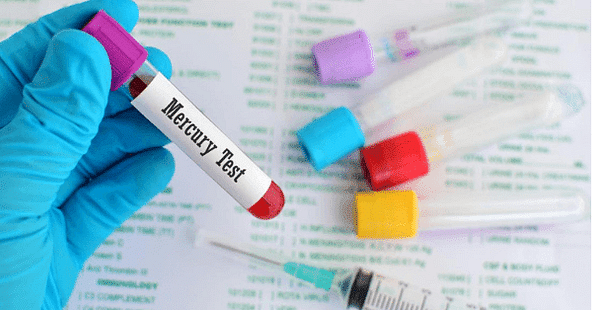IIT Hyderabad's research team conducted a study on the levels of mercury in human beings. The study was carried out on 600 people who belonged to three different cities to check for the level of mercury in their bodies.

The researchers of Indian Institute of Technology Hyderabad have found that the people who live in cities which have active coal-fired power plants and consume local aquatic produce might have higher levels of mercury in their bodies.
IIT - Hyd researchers reached this conclusion after they analysed the amounts of mercury in the hair of about 600 people in three different cities of India. Mercury is a neurotoxin which is distributed in the environment and is present in many products that are encountered in the daily lives of people. It is mainly used in consumer and industry products and exists as one of the natural impurities in ores. Mercury is non-biodegradable and circulates widely within and between ecosystems.
Dr. Asif Qureshi, an Assistant Professor at the Department of Civil Engineering at IIT Hyderabad, was the head of the research team that arrived at this discovery. Three cities were chosen for this research- Hyderabad, which does not have any specific mercury source, Nellore, a coastal city in the state of Andhra Pradesh that has several coal-fired power plants, and Vasco da Gama, a city that lies along the West Coast and has no specific source of mercury but has more fish-eaters.
Also Read: M2Smart Project for Low Carbon Transportation Models Launched at IIT Hyderabad
After having collated information on body mass index, demography, professions, dietary patterns, and other variables of over 600 people belonging to these cities, the research team of IIT Hyderabad analysed the amount of mercury present in their bodies.
Dr. Qureshi spoke about the research and said that the non-occupational exposure of people to mercury comes from food like fish or rice which is grown in contaminated fields. The largest emitters of mercury are estimated to be coal-fired power plants. Apart from neurotoxicity, mercury can also have adverse effects on kidneys and lungs and may lead to heart diseases as well.
Also Read: IIT Hyderabad GATE Cutoff for 2019: M.Tech Selection Criteria and Admission Process
The survey done by the researchers showed that about 5.5 per cent of people that were tested had mercury levels that were above the current US-EPA reference. The study was also reported recently in the Journal of Exposure Science and Environmental Epidemiology, a public health journal.
Are you feeling lost and unsure about what career path to take after completing 12th standard?
Say goodbye to confusion and hello to a bright future!

Was this article helpful?





 Follow us
Follow us












